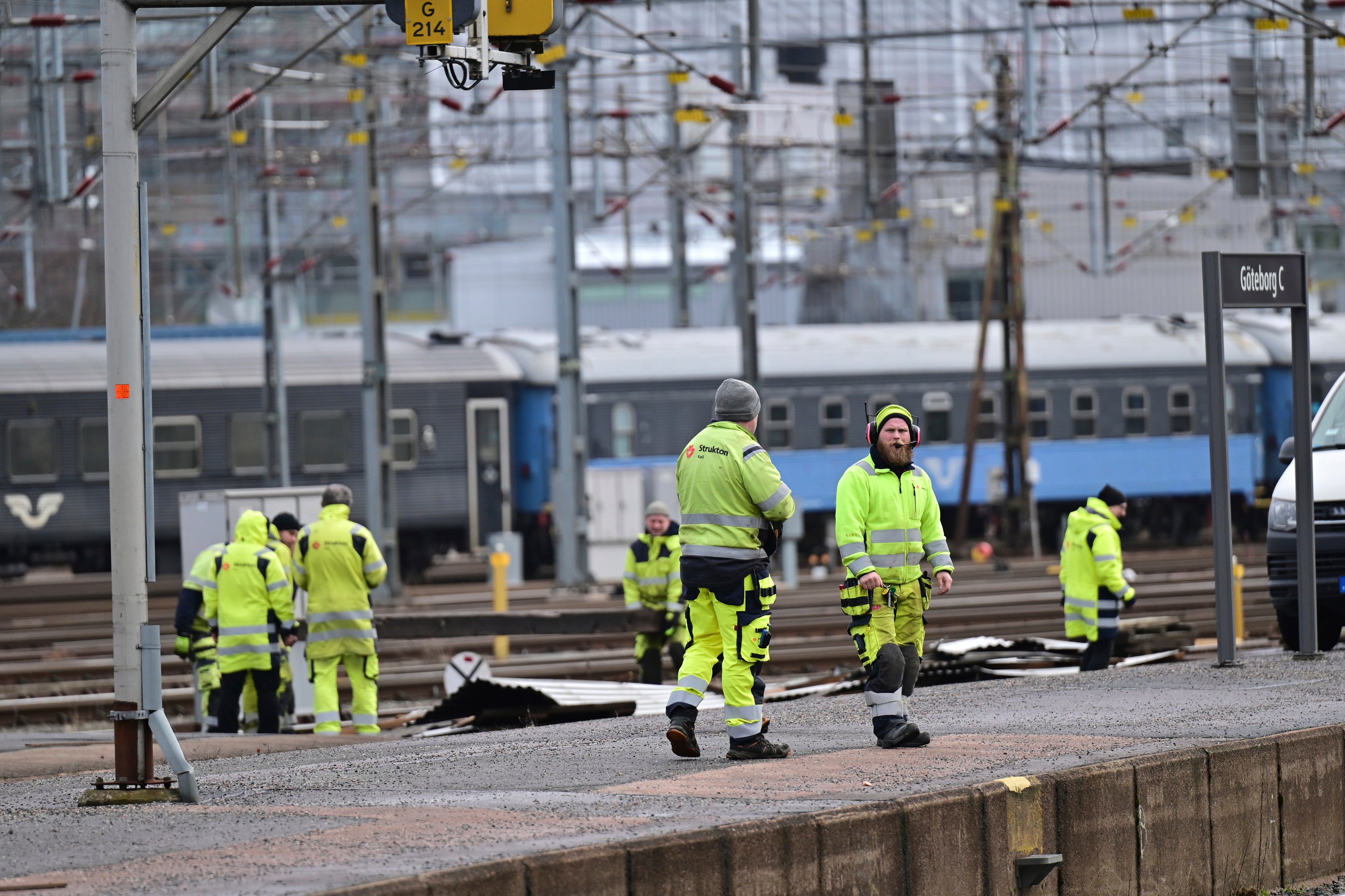Scandinavian storm tears the roof off a train station and leaves ferries idle but no one hurt
Strong winds tore the roof off the main train station in Goteborg Friday, causing no injuries but knocking out power and stopping all rail traffic in and out of Sweden’s second largest city

Strong winds tore the roof off the main train station in Goteborg Friday, causing no injuries but knocking out power and stopping all rail traffic in and out of Sweden’s second largest city.
The storm blustered along the coasts of southern Scandinavia overnight with SMHI, the Swedish Meteorological and Hydrological Institute, issuing its second highest warning Friday. Some 4,000 people were without power on Sweden's west coast, the Swedish TT news agency said.
Photos from Goteborg, on Sweden's western coast, showed part of a roof across the tracks at the central station, with local officials saying it was unclear when train traffic would resume. A bridge in the archipelago north of Goteborg was closed to traffic, the Swedish Aftonbladet newspaper said.
The emergency services in Goteborg urged people to stay indoor because of the wind because “loose objects can fly far and pose a danger to the public, such as building parts, signs, roof tiles and other loose objects outdoors.”
A Goteborg police officer told TT that they had received some 150 calls about trees being knocked down over in the course of five hours. “I have never seen anything like that,” Caroline Karlsson told TT.
Denmark’s Meteorological Institute said the storm, which it named Rolf, was mainly raging across the north and northwestern part of the country. Trees were blown over and flying objects were reported across the country, Danish media said.
Danish meteorologists measured gusts of 135.36 kilometers (84.11 miles) per hour in the north of the country.
Nearby, the Danish frigate HDMS Esbern Snare, which was docked at the Frederikshavn Naval Station, broke free because of the storm and slowly drifted into another frigate, HDMS Absalon, causing scratches in the hull but no major damage, local broadcaster TV2 said.
There were reports of flooded roads in southern Norway. The Norwegian Water Resources and Energy Directorate, known as NVE, had issued a flood warning for the area, and said rain and melting snow in the coming days could cause rivers and streams to spill over.
Several ferry lines in Scandinavia have temporarily suspended service.
The same region was hit in early February when a storm with hurricane-force winds — considered Norway’s most powerful storm in more than three decades — ripped off roofs, heightened avalanche risks, canceled flights and cut power as it raged in parts of the country.
Bookmark popover
Removed from bookmarks